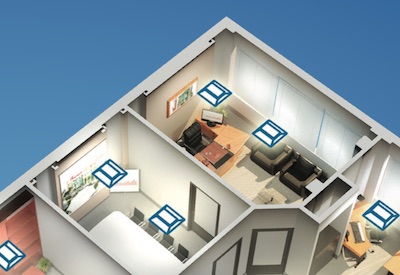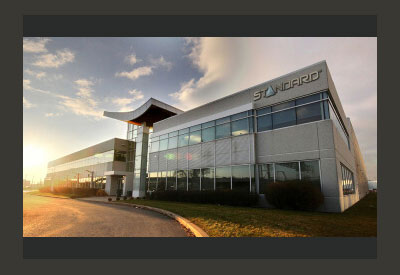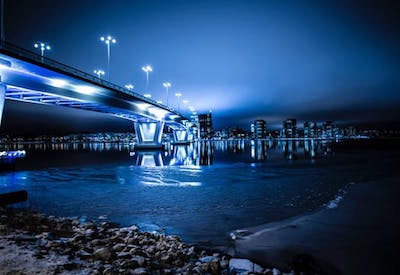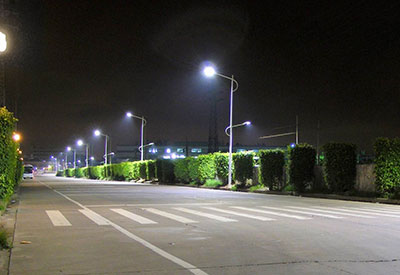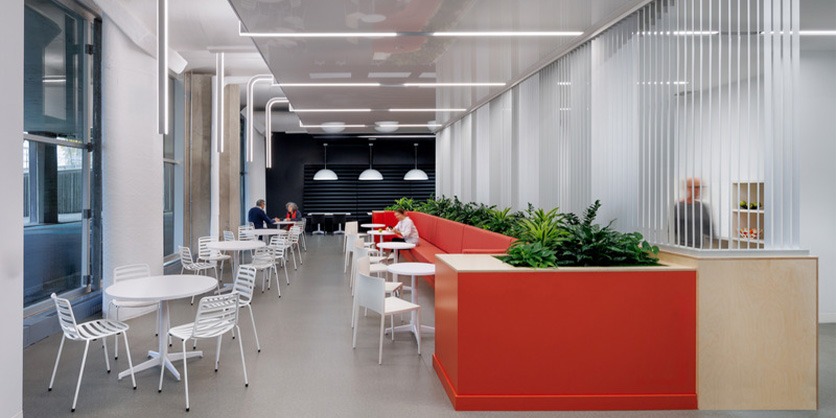Adaptive Lighting Systems Part 3: Scheduling

May 07 2016
The lighting control strategy we’re reviewing today is a low-hanging fruit when it comes to energy savings, especially when we talk about smart lighting systems. Much simpler both in concept and implementation than occupancy sensing or daylight harvesting, scheduling still aims to do pretty much the same thing — eliminate unnecessary lighting usage. But since no sensors are involved, it doesn’t allow luminaires to respond to certain changes in the environment. Instead, it makes them perform in accordance with a predefined schedule.
In a lighting system employing the scheduling strategy, luminaires can automatically turn on, turn off, or dim at certain times of the day. And that’s it. As straightforward as the entire concept is, even simple lighting schedules can produce tangible benefits in spaces with predictable occupancy — offices, classrooms, retail sales floors, etc. The most basic use case involves lights automatically turning on just before the expected arrival of occupants, and turning off at the end of standard operating hours within a given space. Going further, luminaires can be set to dim (e.g., by 50% after normal business hours), and stay at that level for the next hour or two before shutting down completely. During that time, the cleaning crew can do its job, or the employees can perform various maintenance tasks, such as restocking, which do not require above-average light levels that we usually see e.g. in the retail segment.
But those more sophisticated time-based controls can be used to deploy more multifaceted lighting schedules. Different schemes can be set up for weekdays and weekends, summertime and wintertime, and so forth. Occasional events can also be programmed to make light behave in a desired way (e.g., once a month or once a year). There are multiple scenarios that can be implemented to make a given lighting system more autonomous and thus more efficient. And just like in the case of advanced control strategies reviewed previously, larger spaces can be divided into zones, with separate schedules defined for each of them in accordance with predicted occupancy.
In the vast majority of cases, some sort of manual controls must be provided to building occupants to allow them to override deployed lighting schedules when needed. Even a perfectly tuned schedule might have to be disabled from time to time to support certain special events, such as those midnight sales at shopping malls, or just some after-hours office work.
There are two major approaches to the scheduling strategy — one based on a standard time-of-day clock, and the one based on an astronomical clock. The former allows lights to perform certain actions at specific hours, while the latter makes them behave in a desired way when the sun’s angle above the horizon reaches specific values. Scheduling based on an astronomical clock is usually used when we want to make the lights aware of exact sunrise/sunset times in a given area. How does the lighting system know what’s the current position of the sun? This can be calculated based on UTC and the building’s geographic location. Astronomical time schedules are particularly useful for all types of outdoor lighting, but they can get the job done wherever the lights are supposed to turn on at dusk and off at dawn. Shop display lighting is a perfect example.
We’ve earlier called scheduling a low-hanging fruit as far as lighting energy savings are concerned. That’s because of the relatively small effort required to deploy such a strategy. Occupancy sensing and daylight harvesting require the sensory infrastructure, making both deployment and setup way more time and cost consuming. To apply a scheduling strategy to a traditional lighting system, relevant luminaires only need to be wired to a programmable control panel. Once this is provided, lights can start acting in accordance with a user-defined timetable. The entry barrier isn’t particularly high, although putting the entire office building lighting on a schedule isn’t something that can be done overnight. At least not in the case of traditional, wired systems.
Smart luminaires are a different story. Once a connected lighting network is deployed in a given space, lights can be scheduled right away without any additional installation works — as long as the provider of a particular smart lighting platform offers a relevant software layer supporting this capability. Control wires are not needed as individual nodes of the network talk to each other via a wireless communication protocol. A control panel is unnecessary, too, since smart modules inside bulbs or drivers can process all the scheduling procedures on their own. All the input data, such as event activation times or desired light levels, can be conveniently entered through a smartphone app. And since smartphones know exactly what time it is and what their current geographic location is, they can automatically feed the smart lighting system with all the information that is required to enable any sort of scheduling strategy, including the one based on an astronomical clock. Simply put, all the tools are already in place and can be used to implement even the most sophisticated schedules. Retrofitting into advanced lighting controls has never been any easier.
Smart lighting also provides outstanding flexibility in scheduling lighting operation. It allows for scheduling any desired scenes, so that any group of luminaires can switch on at a desired time, each with a different output. And if a particular connected ecosystem goes beyond lighting, other types of devices can also become part of those scenes. How about shades automatically adjusting their operation to the current position of the sun? In a software-defined environment, this is just a matter of several lines of code implemented into smart modules hidden inside individual devices.
When it comes to the requirement of local manual overrides, smart lighting has the answer, too. Traditionally, this has been solved using wall switches or telephone dial-up codes. But who needs any of these when occupants of a particular space can be authorized to control individual lighting fixtures from their smartphones, allowing them to override the scheduled shut-off whenever desired.
Time-based controls are the first step towards an autonomous lighting system. Considering how easy it is to implement scheduling in a smart environment, this lighting control strategy should be a no-brainer for any type of space with fixed operating hours. It saves energy and maintenance costs, adds convenience for occupants, prevents light pollution and helps building owners meet some of the requirements of building energy codes. It combines perfectly with occupancy sensing, allowing for trimming the maximum allowable light level outside standard operating hours, but even on its own it can provide lighting energy savings in the range of 15% to 35%. This is yet another reason to retrofit into a smart lighting system, and instantly start enjoying the benefits of highly flexible and efficient advanced lighting control strategies. Such an investment pays huge dividends.
This article first appeared as a Silvair blog post. In the previous issue: Daylight Harvesting
Read Part 1: Adaptive Lighting Systems Part 1: Occupancy Sensing
Read Part 2: Adaptive Lighting Systems Part 2: Daylight Harvesting
Silvair’s team of software developers, hardware engineers, UX designers, product managers and testers are building a growing network of products that are truly smart and user friendly: https://www.silvair.com.

